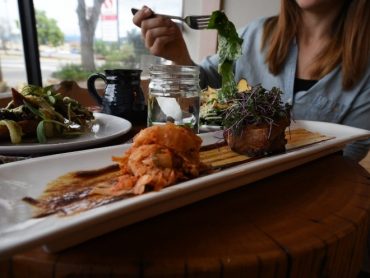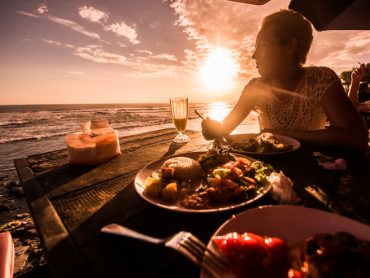In Vino Veritas Part LXIX – Designing the Perfect Wine Tasting
Category : Food & Beverage
Date : November 15, 2018
As we continue our descent into the current experiential age, to drive revenues restaurateurs must look to imbue all meal orders with an air of self-actualization, education and panache in order to justify superior prices and keep the patrons coming back.
While you may already have an outstanding wine list that adroitly runs the gamut from approachable, by-the-glass labels to those sticker-stock, special-occasion bottles, it is nonetheless advisable that you build out a flight or tasting program so that you can meet this modern demand.
Knowing that wine tastings are in vogue and quite lucrative at that, here are a few pointers to keep in mind when designing such an experience.
- Quality over quantity. This harks back to the concept of the paradox of choice whereby when you give someone too many options and too much information to digest all at once, he or she will find that making a decision or even processing all the various micro-experiences is intimidating and stressful. While this is hardly a push for keeping it simple, your tasting must have a structure so guests can properly form the narrative in their minds.
- Presentation matters. If a wine tasting isn’t posted to social media, did it ever even happen? Such is the world we will live in nowadays, but rather than scoff at it you would be better off adapting to the times. Think in terms of instagrammable moments. We eat with our eyes first, after all, so presentation affects nearly every attribute of the experience you ultimately design – the type of glassware, the table setting, the room décor, the lighting, the way the food is placed on the plate and so on.
- Nontraditional complements. Everyone has an ingrained image in their heads off wine paired with cheese and perhaps a few crackers on the side. Add an element of surprise by offering an unexpected meal accompaniment ranging from olives, house-smoked meats or nuts to dessert samplings, marinated seafood or artisanal breads with homemade spreads. Anything that can pair is fair game!
- Hyperregionality. As an extension of the movements for local and authentic dining, this neologism for our oenophilic purposes would inscribe a very narrow focus on one particular commune or microclimate to tell a holistic story about that area. Having just traveled to Tuscany this past summer, the example I offer here would be to deep dive on a specific valley rather than provide a morsel from various towns that may be hours away from each other. During this last trip, we visited Montepulciano, so a tasting might include a Rosso, Vino Nobile, Reserva and a grappa to finish off, complemented by a few different pecorinos from the neighboring city of Pienza. Sourcing will be a consummate issue, but the end result is that you are giving your guests a memory that will last a lifetime.
- Knowledgeable guides. Ideally you would have each flight immaculately prepared and described by the sommelier or a veteran server. Regardless, training is a must, as part of the experience will always be the human factor – the positive attitude your team brings to the occasion and how well they are able to address questions to enhance the self-actualization aspect. If staffing is an issue or if demand outpaces server availability, you will need to prepare some literature so that patrons can embark upon a self-directed tasting. Such pamphlets should be fun but also educational, and they should give some semblance of instructions as to how best to savor each component.
- Souvenirs. Similar to the earlier thought about social media and proof of the experience, offering your guests a keepsake will give them one extra surprise to help solidify the memory. The most obvious form of a leave behind would be an embroidered copy of the tasting menu, similar or verbatim to written instructions you have so diligently prepared as a backup for any staffing shortages. Another easy one would be house-crafted, gift-wrapped desserts of any kind – a few chocolate truffles or profiteroles would suffice. Beyond that, get creative and make sure that the souvenir stays on theme.
- Mini-tastings. An elaborate tasting of any sort typically commands a somewhat exclusionary price tag just for the restaurant to recover its costs. How can you compress the experience down to something that can be enjoyed on a whim and only lasts for a maximum of 30 minutes of entertainment? Think no more than three wines and three different snacks as accompaniments. Still, though, just because of its abbreviated format is no reason not to have it follow a given theme and tell a meaningful story.
- Perfection means constant innovation. Nothing is every truly perfect, but like the limit function in calculus equations we can always strive to get ever closer by tweaking, tinkering and trying new things. Ask your guests for firsthand feedback and listen to what your staff have heard. See what’s working and what might need a further dose of creativity.




